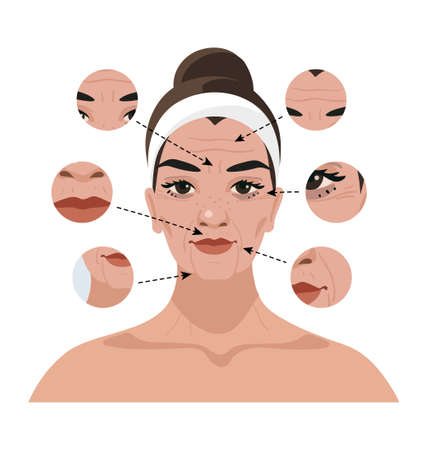Introduction: Skin of Colour in the UK
As someone who has lived and breathed the vibrant, multicultural tapestry of the UK, I have witnessed first-hand how the face of Britain is constantly changing. The growing diversity across our cities and communities is something to be celebrated, but it also brings unique challenges—especially when it comes to skin health. People with skin of colour, including those from South Asian, Black, Middle Eastern, and mixed-heritage backgrounds, make up an increasingly significant portion of the population. Yet, dermatological care in the UK has not always kept pace with this demographic shift. In particular, pigmentation concerns such as melasma are often misunderstood or overlooked. It’s crucial that we recognise the distinctive needs of skin of colour within our healthcare system—not just for inclusivity’s sake, but because these skins behave differently and deserve tailored attention. Only by focusing on these nuances can we offer the compassionate, effective care every Briton deserves.
2. Understanding Pigmentation and Melasma in Diverse Skin Tones
For anyone living in the UK, especially those with skin of colour, understanding pigmentation and melasma is a vital step towards proper skincare. Pigmentation refers to the colouring of the skin, which is primarily determined by melanin—a natural pigment produced by cells called melanocytes. When this process goes awry, it can lead to uneven patches or spots that appear darker (hyperpigmentation) or, less commonly, lighter (hypopigmentation) than the surrounding skin. Melasma, on the other hand, is a specific form of hyperpigmentation that often presents as symmetrical brown or grey-brown patches, typically on the face.
The way pigmentation disorders manifest can vary dramatically depending on your skin tone. People with lighter skin tones might notice faint freckles or reddish marks after inflammation, whereas individuals with skin of colour—such as those from South Asian, African, Caribbean, or Middle Eastern backgrounds—tend to develop more pronounced dark spots and persistent discolouration. This is because higher levels of melanin make their skin naturally more reactive to triggers like sun exposure, hormonal changes, and even minor injuries.
Prevalence and Presentation: Skin of Colour vs. Lighter Skin
| Skin of Colour | Lighter Skin Tones | |
|---|---|---|
| Pigmentation Disorders | More common and often more severe; includes post-inflammatory hyperpigmentation (PIH), melasma, and dark patches after acne or eczema. | Less common; tends to present as redness or mild brown spots rather than deep patches. |
| Melasma Appearance | Larger, more defined patches; often affects cheeks, forehead, upper lip, and jawline. | Tends to be lighter and less clearly demarcated; may blend more with background skin tone. |
| Triggers & Risk Factors | Hormonal changes (e.g., pregnancy, contraceptives), sun exposure, inflammation; stronger genetic component in many ethnic groups. | Mainly triggered by sun exposure and hormonal factors; genetic risk generally lower. |
| Treatment Response | Risk of further pigmentation if treated aggressively; requires tailored approach to avoid worsening the issue. | Generally tolerates stronger treatments but still needs care to prevent irritation. |
In the diverse communities across the UK—where multiculturalism shapes daily life—these differences are not just academic. They influence how visible pigmentation issues become in day-to-day experiences and how individuals perceive their own skin health. For people with skin of colour, even minor blemishes can linger for months as dark marks, affecting confidence and prompting a search for effective solutions that are both safe and respectful of their unique needs. Understanding these distinctions lays the foundation for making informed choices about skincare and treatment options tailored to every complexion found within Britain’s vibrant tapestry.

3. Cultural Perceptions and Experiences of Pigmentation
Living in the UK, I have come to realise that pigmentation and melasma carry very different meanings within our wonderfully diverse communities. For many people of colour, skin tone is not just a matter of aesthetics; it’s deeply intertwined with identity, heritage, and even social acceptance. I’ve often found myself reflecting on how British society—while proud of its multiculturalism—still harbours subtle biases when it comes to visible differences like uneven skin tone. In some circles, lighter skin is quietly prized, while darker or patchier complexions are subjected to misunderstanding or even stigma.
This cultural lens shapes how individuals experience pigmentation issues emotionally. I’ve spoken with friends from South Asian and Afro-Caribbean backgrounds who describe feeling self-conscious about their melasma, not because of health concerns but due to the comments or assumptions made by others. Even within families, there can be pressure to achieve a ‘clear’ or ‘even’ complexion, sometimes leading to the use of harsh treatments or home remedies passed down through generations.
The British media and beauty industry also play a role in shaping perceptions. Although there’s been progress, mainstream advertising still rarely features models with visible pigmentation or melasma. When representation does happen, it feels like a breath of fresh air—a small but meaningful step towards normalising these conditions and celebrating the full spectrum of skin tones seen across the UK.
Personally, navigating my own journey with pigmentation has been both challenging and enlightening. The emotional impact goes beyond surface appearance; it influences confidence, social interactions, and even career opportunities at times. However, I’m heartened by growing conversations around skin positivity and the importance of respecting everyone’s unique experiences with their skin—something that feels particularly relevant in such a vibrant, multicultural nation as ours.
4. Barriers to Effective Treatment in the NHS and Private Sector
Living in the UK as someone with skin of colour, seeking help for pigmentation issues like melasma often feels like navigating a maze with missing signposts. Despite the NHS’s commitment to accessible care and the growing range of private clinics, unique challenges persist for people of diverse backgrounds when it comes to dermatological services. The journey begins at the very first appointment, where differences in how skin conditions manifest on darker tones can result in misdiagnosis or underdiagnosis. Many healthcare professionals are still not fully trained to identify pigmentation disorders accurately on non-white skin, which can delay effective treatment and leave patients feeling frustrated or dismissed.
Lack of Suitable Treatments and Tailored Approaches
One of the most significant barriers is the limited availability of treatments specifically tested or designed for skin of colour. In both NHS and private settings, standard protocols often cater primarily to lighter skin types, leading to concerns about safety and efficacy for those with more melanin-rich skin. For example, some common treatments for melasma—such as certain lasers or peels—carry a higher risk of side effects like post-inflammatory hyperpigmentation in darker skin tones. This means that many patients either have to accept suboptimal results or risk further complications.
Underrepresentation in Clinical Research
A deeper issue lies in the lack of representation within clinical research. Medical studies in the UK have historically focused on white populations, resulting in a knowledge gap about how pigmentation disorders affect other ethnic groups and how best to treat them. This underrepresentation translates into fewer evidence-based guidelines and limited product development tailored for skin of colour, perpetuating a cycle where patients may feel overlooked by mainstream dermatology.
Common Barriers Faced by Patients with Skin of Colour
| Barrier | Description |
|---|---|
| Misdiagnosis | Symptoms present differently on darker skin, leading to delays or inaccuracies in diagnosis. |
| Lack of Suitable Treatments | Treatments are often tested primarily on lighter skin types, increasing risks for adverse effects. |
| Underrepresentation in Research | Limited data leads to fewer tailored guidelines and products. |
| Cultural Sensitivity | Lack of cultural competence among practitioners can affect trust and communication. |
The Emotional Impact
The emotional toll of these barriers cannot be overstated. Many individuals feel isolated or disheartened when their concerns aren’t taken seriously or when they struggle to find safe, effective solutions. There’s also a sense of invisibility—of not seeing one’s experience reflected in health campaigns or clinical advice—which can erode confidence in seeking professional help at all.
5. Tailoring Skincare Approaches: Best Practices and Innovations
When it comes to addressing pigmentation and melasma in skin of colour, a one-size-fits-all approach simply does not work—especially within the unique British climate and lifestyle. Here are some best practices, routine recommendations, and innovative therapies available in the UK that have proven both effective and gentle for diverse skin tones.
Understanding Ingredients That Work
For those with skin of colour, its essential to select products that minimise irritation while effectively targeting pigmentation. Ingredients like azelaic acid, niacinamide, and licorice root extract have become staples in many dermatologists recommendations across the UK. Azelaic acid is particularly popular due to its dual ability to reduce inflammation and lighten dark spots without causing post-inflammatory hyperpigmentation—a concern for deeper skin tones. Niacinamide also helps even out skin tone while strengthening the skin barrier, making it ideal for use in Britains often damp or cold weather.
Safe and Effective Treatment Routines
A simple yet consistent skincare routine can make a significant difference. A typical regimen might include a gentle, sulphate-free cleanser followed by an antioxidant serum containing vitamin C (in lower concentrations to avoid irritation). This is especially relevant during grey British winters when UV exposure may be low but environmental pollution remains high. Moisturisers with ceramides or hyaluronic acid help maintain hydration, which is crucial for preventing further pigmentary changes. During daylight hours—even on cloudy days—a broad-spectrum SPF 30 or above is non-negotiable. Many UK-based brands now offer mineral sunscreens that blend well into darker skin tones without leaving a chalky residue.
Professional Therapies: What’s Available in the UK?
Chemical peels using mild acids such as mandelic or lactic acid are gaining favour among practitioners who specialise in treating darker skin types. These peels are less likely to trigger adverse reactions compared to stronger glycolic peels. Additionally, targeted laser treatments like low-fluence Q-switched Nd:YAG lasers are available at reputable UK clinics; these devices can help break up pigment safely when used by experienced professionals familiar with ethnic skin.
Innovative Solutions and Emerging Trends
The UK has seen a rise in cosmeceutical brands developing products specifically for melanin-rich skin, including formulations with tranexamic acid and arbutin. There’s also growing interest in oral supplements containing polypodium leucotomos extract or glutathione, both of which have shown promise in supporting the skin’s resilience against UV-induced pigmentation—although their use should always be discussed with a healthcare provider first.
Ultimately, creating a bespoke plan that blends trusted ingredients with new innovations—while considering the UK’s unique environment—empowers individuals with skin of colour to manage pigmentation concerns safely and beautifully. The key lies in patience, consistency, and partnering with knowledgeable practitioners who appreciate the nuances of diverse British complexions.
6. Living with Pigmentation: Personal Stories and Community Support
When you live in the UK with skin of colour, experiencing pigmentation or melasma can feel isolating at times. Yet, real stories from people across Britain reveal that no one is alone in this journey. For instance, Priya, a 34-year-old pharmacist from Manchester, shared how her confidence wavered after dark patches developed on her cheeks post-pregnancy. She found solace not only through professional advice but also by connecting with a local peer support group, where honest conversations and shared tips helped her regain self-assurance.
Similarly, Ade, a teacher in London originally from Nigeria, described his frustration navigating high-street products that didn’t cater to his deeper skin tone. It was only after joining an online community for men with skin of colour that he discovered tailored skincare routines and reputable dermatologists who understood his specific needs.
The Power of Peer Groups
These real-life anecdotes highlight the profound impact peer groups have for individuals living with pigmentation issues. Whether it’s a WhatsApp group, a local meet-up in Birmingham, or forums like Skin of Colour Society UK, these spaces provide a safe haven to ask questions, vent frustrations, and celebrate progress without judgement.
Advocacy and Representation
Advocacy plays an equally vital role. Campaigns led by organisations such as Black Skin Directory have amplified voices often overlooked in mainstream skincare discussions. This increased visibility pushes brands and healthcare providers to offer more inclusive solutions and better training on conditions like melasma among diverse populations.
Resources for Emotional & Practical Support
The availability of culturally sensitive resources—ranging from helplines to workshops—can make all the difference. Charities like Changing Faces provide one-on-one counselling and practical advice tailored to those dealing with visible differences. For many, just knowing there are resources designed with their experiences in mind brings immense relief.
Ultimately, living with pigmentation concerns as a person of colour in the UK is about much more than skincare—it’s about finding community, advocating for representation, and supporting each other on both emotional and practical levels. When we share our stories and lift each other up, we create a culture where everyone feels seen, heard, and empowered to embrace their own beautiful skin.
7. Looking Forward: Building Awareness and Better Care
As I reflect on the evolving world of dermatology in the UK, its clear that we are standing at a crossroads—one shaped by both medical innovation and cultural change. The landscape for skin of colour is shifting, albeit gradually, with growing recognition of the unique challenges faced by those living with pigmentation issues and melasma. Yet, there remains a significant gap in how these conditions are understood and managed, both within healthcare settings and in wider society.
The Call for Ongoing Education
One cannot overstate the importance of ongoing education among healthcare professionals. Historically, British dermatology has often been guided by research and teaching focused primarily on lighter skin tones, leaving many practitioners underprepared to recognise and treat pigmentation disorders in darker skin. Continuous professional development—through conferences, workshops, and inclusive medical literature—is essential if we are to close this knowledge gap. By learning from specialists with experience in treating diverse skin types, clinicians can develop greater sensitivity and competence, ensuring more accurate diagnoses and tailored treatment plans for everyone.
Inclusive Beauty: Beyond Aesthetics
The concept of beauty in the UK is also undergoing a transformation. Inclusive beauty isn’t just a marketing trend—it’s an acknowledgement that every skin tone deserves attention, care, and celebration. Brands are beginning to launch products designed specifically for darker complexions, while campaigns increasingly feature models representing Britain’s multicultural reality. This shift does more than broaden product ranges; it challenges outdated societal perceptions and empowers individuals to seek support without shame or stigma.
Changing Societal Attitudes
This new era of inclusivity is helping to break down barriers—both psychological and practical—for people with skin of colour facing pigmentation concerns. When representation becomes the norm rather than the exception, it fosters a sense of belonging that can have real-world impacts on mental health and confidence. As conversations around skin health become more open and nuanced, there’s hope that stereotypes about “problematic” skin will fade into history.
A Shared Responsibility
Ultimately, building awareness and delivering better care is a collective responsibility. Patients must feel empowered to advocate for their needs; professionals must commit to lifelong learning; brands must continue prioritising genuine inclusivity; and society as a whole must celebrate diversity as an asset. With each small step—whether it’s a revised training module or a new shade on the high street—we move closer to a future where everyone in the UK can access compassionate, effective care for pigmentation and melasma, regardless of their skin colour.

